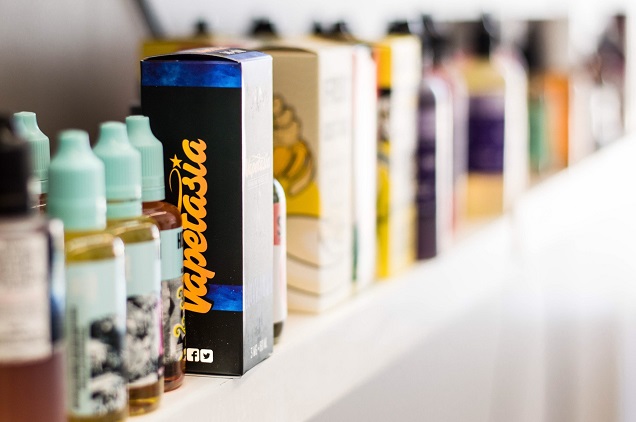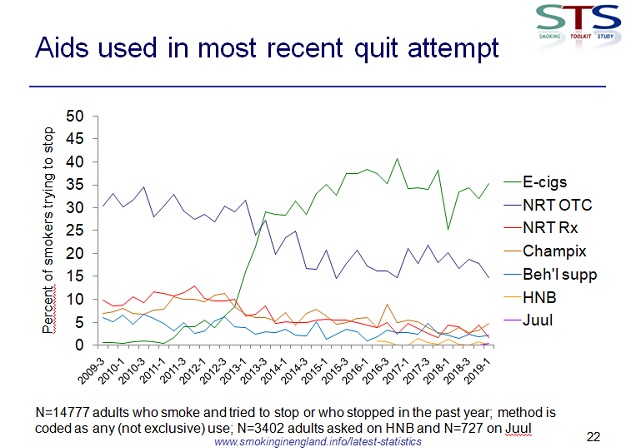
E-liquid flavors are coming under a lot of scrutiny recently, especially in the US, where the wide range of options available to consumers is discussed as if it’s a trap designed to lure youth into nicotine addiction.
But this view ignores the fact that the vast majority of vapers are smokers looking to reduce the harm of their nicotine use, and that flavors are a crucial factor in the appeal of vaping to adults.
At the Global Forum on Nicotine in Warsaw last weekend, the UK-based charity the New Nicotine Alliance warned that banning flavors could be detrimental to public health.
Understanding why this is the case offers an important insight into why vaping has taken off in the way it has: in a nutshell, it is a consumer-driven phenomenon. And, above all, it’s fun.
Quitting Smoking and the “Aaah” Moment of Finding the Right Flavor
Quitting smoking isn’t easy. The majority of quitting approaches available to smokers today aren’t effective for the majority of smokers, and even worse, many smokers opt to quit “cold turkey” and shun approaches that could improve their chances of stopping smoking.

But vaping has the potential to change all that. Data from the Smoking Toolkit Study in the UK shows that of the smokers who use a quitting aid, vaping has been the most popular choice since 2013. Combined with the growing body of evidence showing that vaping is effective for quitting, understanding the appeal and effectiveness of vaping should be a big priority for everybody interested in the issue.
This is why the briefing at the Global Forum on Nicotine matters, and why e-liquid flavors matter. Dr. Sharon Cox, who works at the Centre for Addictive Behaviours Research at London South Bank University, said that the evidence shows that the range of flavors available is a crucial factor in the appeal of vaping to smokers. She described finding a flavor they enjoy as an “aaah” moment for smokers, where everything finally clicks and they start to really get into vaping and stay interested in it.
James Dunworth, owner of E-Cigarette Direct, told the story of his mum switching to vaping, and pointed out that finding the right flavor was crucial to her journey, too. This story is familiar to anybody who knows vapers or who has vaped themselves: finding the right flavor is when the whole thing starts to come into its own.
He added:
Vaping works because it’s fun. Take the pleasure out of vaping and it will stop working. Key to that pleasure is flavor. Because of demand, there are a huge number of flavors, meaning there’s something for everyone – and when someone finds their perfect flavor, they’re highly unlikely to go back to smoking.
Nancy Sutthoff, a consumer advocate from New Zealand, said:
The availability of choice is what makes using safer nicotine products so effective – especially when it comes to flavors.
Why Restricting Flavors Would Be a Mistake

Much of the discussion in the US – and the legal position in places like San Francisco – is centered on the idea that flavors are driving the rise youth vaping, and that tobacco and potentially menthol are the only flavors vapers should need.
Dr. Christopher Russell, deputy director of the Centre for Substance Use Research in Glasgow, pointed out that a recent article in the New England Journal of Medicine argued that tobacco is the only flavor that should be needed. But he disagreed:
There is growing evidence that suggests adult smokers increasingly prefer to use vapor products that are not flavored like tobacco. Evidence from our own research suggests that a significantly higher proportion of smokers who prefer to vape non-tobacco flavors go on to completely quit smoking cigarettes within three months.
Restricting adult smokers’ access to flavored vaping products would therefore very likely result in fewer smokers trying vaping as an alternative to continuing to smoke, in substantially fewer smokers attempting to switch to vaping, and ultimately, in substantially fewer smokers succeeding in their attempt to switch to vaping.
Dr. Sharon Cox echoed this, arguing that there’s simply no logic behind the idea of making vaping taste like the thing you’re trying to avoid. She added that “we shouldn’t make policy based on potentials,” and with no hard evidence to suggest that restricting flavors would have any benefits in reducing youth vaping (combined with various studies suggesting that it would impact adult smokers hoping to switch), it’s hard to argue with this perspective. Without strong evidence, the risk of significant unintended consequences isn’t something you can simply ignore in favor of your pet theory.
She added that we need more research on the role of flavors in the appeal and effectiveness of vaping, and that is certainly the case.
But in the US in particular, there is a big risk that people in positions of power are determined to push on with likely-damaging actions before such evidence is even collected.
Flavors are Crucial to the Success of Vaping
Martin Cullip, chair of the NNA and the host of the briefing, summarized the whole issue well:
E-cigarettes are a proven safer alternative to smoking. The UK boasts 1.7 million former smokers who have converted from smoking to exclusively vaping instead. Flavors have been a big driver of that success, by distancing smokers from tobacco and providing an incentive to switch, with a wide selection of different options to suit their preferences.
The opposition to flavors roundly ignores – or at least sidelines – the substantial benefits they offer to adult smokers making the switch. There is a huge selection of e-liquid flavors on the market, but far from being a ploy from a shady industry to encourage teens to start vaping, they are an integral part of what makes vaping work for adult smokers. The reason places like the UK are enjoying such success with vaping is because it’s something to be enjoyed, and with light-touch regulations it will flourish. This may be an alien concept to people more familiar with traditional quitting approaches, or even something that makes them wary of vaping, but it’s the cold, hard truth of the matter.
If you make quitting fun, more smokers will quit.

